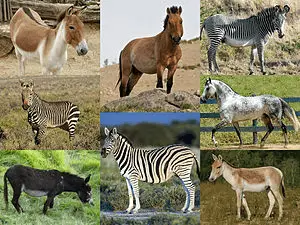In taxonomy, a scientific naming process called binomial nomenclature gives all known organism two names, which is similar to people having a first name and surname. This systematic process names organisms according to their genus and species. This article will lay out the differences between the two.
Summary Table
| Genus | Species |
| A rank higher than species in the taxonomic hierarchy | Lowest rank in the taxonomic hierarchy |
| Organisms from separate genera cannot produce offspring capable of reproducing | Organisms from separate species may or may not produce offspring capable of reproducing |
| Composed of different species | Composed of different subspecies or breeds |
Definitions

The word genus is a Greek term for “race.” In a taxonomic hierarchy, it ranks above the species level and below the family level. A genus may consist of more than one species. Biologists, however, would refer to one or more species of organisms related to each other when talking about a genus.
“Genus” is a singular noun, and its plural form is “genera.” The genus name of an animal is always written in italics and is the first word in an organism’s scientific name. The first character of the genus name is always capitalized. Thus, writing the scientific name of humans would be Homosapiens. As an abbreviation, it is common practice to capitalize the first letter of the genus name followed by a period (e.g. H. sapiens). Genus names are sometimes given an English flavor to make it sound more common. A genus name may also be referred to as the generic epithet or generic name.
A genus may have several species under it and a number of genera could be from a single family or subfamily. While two organisms under a genus may or may not produce a fertile offspring, organisms from two separate genera cannot produce an offspring that is capable of reproduction.

Species are the most basic level in a taxonomic hierarchy where grouped organisms are of similar features and capable of producing fertile offspring when they breed. Organisms of the same species have identical chromosome counts, which mean they have the same structure and form. Organisms in a species usually share the same features intrinsic only to their species. In taxonomy, any number of species may comprise a single genus, which makes it the ancestor of the species. A species may have any number of subspecies or breeds, though they are not usually included when writing or mentioning the organism’s scientific name.
The name of the species is the second part of an organism’s scientific name. It is typically written in italics and lowercase letters. For instance, the scientific name Ursus americanus (American black bear) is one of at least 14 species in the Ursus genus. In zoology, a species name is also called a “specific name,” while botanists refer to it as a “specific epithet.”
Genus vs Species
So, what’s the difference between genus and species? Organisms from separate genera cannot produce offspring capable of reproduction. In contrast, a species is the largest group of organisms whose subspecies can breed and produce offspring capable of reproduction as well. Organisms from separate species under a specific genus may or may not be able to reproduce fertile offspring.
A genus ranks just above the species in an organism’s taxonomic hierarchy. A genus is made up of any number of species, while a species is composed of any number of subspecies or breeds. When writing a taxonomic name, the genus name comes before the species name. While there are no clear-cut guidelines in place when assigning species to separate genera, subspecies in a certain species are required to possess identical body structure and form.






